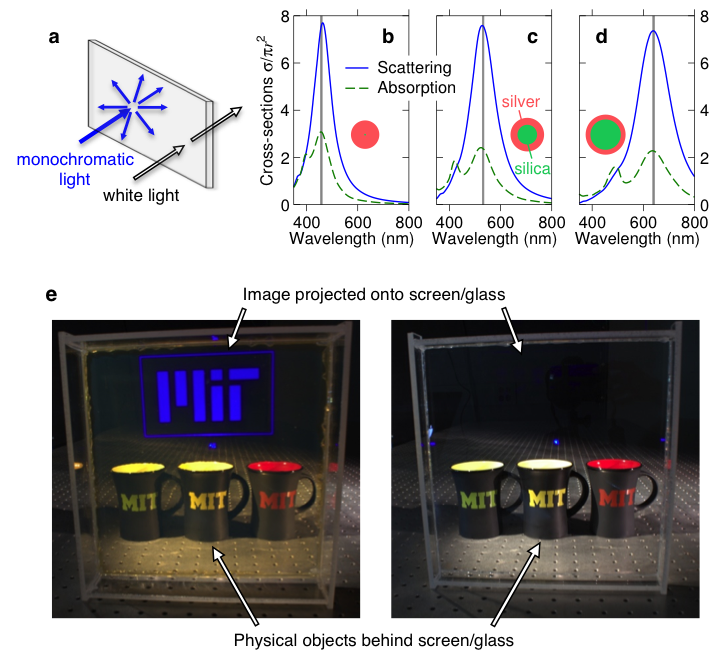Transparent displays have many
useful applications:
one may turn a regular window into a projection screen, or display navigation
and dashboard information while looking through the windshield of a car or
plane. A number of technologies have been developed aiming at a subset of these
applications,
but
each method has certain limitations. Researchers in the MIT MRSEC have
developed a new type of transparent display using resonant nanoparticle
scattering.
By embedding
wavelength-selective nanoparticles in a transparent film and by projecting
images at the resonant wavelength, a screen is created that scatters
most of the projected light while being almost transparent to the ambient light.
A blue-color
transparent display
was experimentally realized this way using silver nanoparticles embedded
in a
transparent polymer film. The figure on the right (bottom
panel) shows
the transparent display at work, with a blue MIT logo projected onto the screen
from a laser projector.
The
projected image shows up clearly on the screen, and is visible from all
directions. In comparison, the same image projected onto regular glass can barely
be seen due to the lack of scattering.
This approach
features simplicity, wide viewing angle, scalability to large sizes, and
low cost. It
can turn store windows, office windows, or the windshield of cars into
projection screens.

(a) Resonant nanoparticles are
embedded in a polymer film to yield a material that scatters light strongly at
the targeted resonant wavelength but is otherwise transparent. (b-d) Cross
sections of silver-shell silica-core nanoparticles optimized
to
scatter blue,
green, and red lights. (e) Comparing the transparent projection screen (left)
and a regular piece of glass (right). A blue MIT logo is projected onto both,
but only shows up on the transparent screen. Three cups are placed behind both
screens to visually compare the transparency.